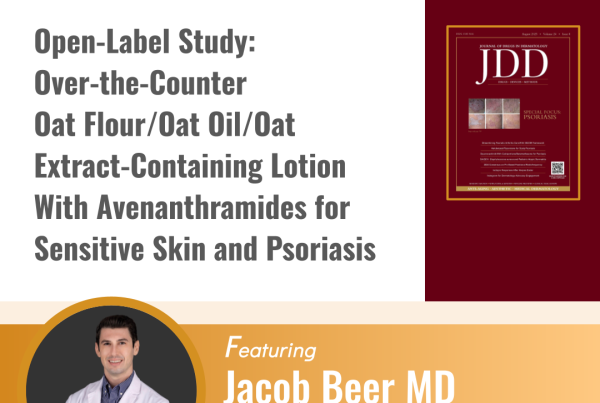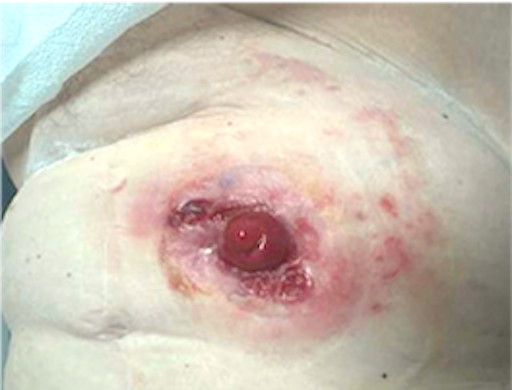Featured Article

As 2020 comes to a close, we are excited as we look to 2021. We are incredibly grateful to the researchers who have chosen to publish their work with JDD. And, we look forward to continuing to play a role in highlighting the benefits of the most promising treatments for your patients in the New Year.
As 2020 comes to a close, we are excited as we look to 2021. We are incredibly grateful to the researchers who have chosen to publish their work with JDD. And, we look forward to continuing to play a role in highlighting the benefits of the most promising treatments for your patients in the New Year.
The second half of 2020 has seen the world still trying to navigate and overcome the COVID-19 pandemic, and the practice of dermatology has been no exception. However, while still an area of focus, dermatologists have been reading, sharing and discussing studies about a variety of other conditions and treatments relevant to their patients.
In our year-end top–ten list, we’re sharing the case studies, reviews and investigations published by the Journal of Drugs in Dermatology that have been downloaded and read the most in the past 12 months.
As the world sought to understand the emerging Severe Acute Respiratory Syndrome Coronavirus 2 (SARS-CoV-2), or coronavirus disease 2019 (COVID-19), many potential signs and symptoms were investigated in connection with the virus, leading dermatologists to also grapple with identifying potentially afflicted patients. In a case study published early in the pandemic, authors in Cairo, Egypt, looked at whether a reported case of a pityriasis rosea-like rash could be connected with COVID-19.
While COVID-19 remains a topic of interest, other issues like the use of neutraceuticals, approaches to treating melasma and hyperpigmentation, countering hair loss, and calming dermatitis have drawn attention.
Nutrition and supplementation are topics of interest across medicine for their potential roles in overall health and wellness, including skincare. A literature review published in early 2019 examined the benefits of collagen supplementation in skin healing and anti-aging. The authors reported on a total of 11 studies that included 805 patients being treated for a range of issues from decubitus ulcers to anti-aging. In their analysis, the authors noted that collagen supplementation appeared to be promising with potential improvements in elasticity, hydration and dermal collagen density; however not all supplements are created equal and patients should be counselled with regard to ingredients and expectations, they noted. Another study that explored the use of a neutraceutical supplement for the treatment of hair loss highlighted botanical ingredients that may mitigate triggers for hair loss and help to restore balance to the follicle.
In line with patient interest in “natural” treatments, investigators examined the mechanism of action for observed dermatologic benefits of colloidal oatmeal and found that extracts of colloidal oatmeal decreased pro-inflammatory cytokines in vitro.
“Clinical evaluations showed that the colloidal oatmeal skin protectant lotion significantly improved dryness, scaling and roughness as early as 1 day after use, and these improvements were maintained over the duration of the study with continued use of the lotion,” the authors wrote.
Among the investigations into treatments for common but challenging conditions, authors from the University of Kansas Medical Center, Kansas City, KS, reported on a case of chronic bilateral nasolabial fold seborrheic dermatitis. They hypothesized that Crisaborole 2% ointment, a PDE4 inhibitor would reduce the inflammation. After 2 treatments per week for 4 weeks, the investigators observed a notable reduction in scaling and erythema on the treatment site.
Another commonly seen condition, xanthelasma palpebrae, can be a significant cosmetic concern for patients. In a case study published in 2016, researchers report on a case in which they used a hyfrecator for superficial tissue destruction resulting in excellent cosmetic results, the authors showed.
Melasma and hyperpigmentation are among the challenging conditions dermatologists see. One study still garnering attention is an investigation into the benefit of Vitamin C plus iontophoresis. Investigators observed a mean 73% improvement in abnormal pigmentation after treatment combining Vitamin C with a full-face iontophoresis mask. A mean improvement of 15.7 on the Melasma Area and Severity Index was also noted.
A review of 10 studies examining the efficacy of retinoids and azelaic acid for the treatment of acne and subsequent post-inflammatory hyperpigmentation in skin of color reported growing evidence that retinoids are well-tolerated and could be considered as first-line therapies to treat acne people with skin of color. In addition, azelaic acid may offer improvement in both acne and hyperpigmentation, the authors noted.
Finally, a more recent review evaluated 35 randomized controlled trials of topical agents for the treatment of melasma found strong evidence for the recommendation of cysteamine, triple combination therapy, and tranexamic acid.
As 2020 comes to a close, we are excited as we look to 2021. We are incredibly grateful to the researchers who have chosen to publish their work with JDD. And, we look forward to continuing to play a role in highlighting the benefits of the most promising treatments for your patients in the New Year.
- Oral Collagen Supplementation: A Systematic Review of Dermatological Applications
- Pityriasis Rosea-Like Rash as a Cutaneous Marker for COVID-19 Infection
- Anti-Inflammatory Activities of Colloidal Oatmeal (Avena sativa) Contribute to the Effectiveness of Oats in Treatment of Itch Associated With Dry, Irritated Skin
- Successful Short-Term and Long-Term Treatment of Melasma and Postinflammatory Hyperpigmentation Using Vitamin C With a Full-Face Iontophoresis Mask and a Mandelic/Malic Acid Skin Care Regimen
- Retinoids and Azelaic Acid to Treat Acne and Hyperpigmentation in Skin of Color
- A Novel Multi-Targeting Approach to Treating Hair Loss, Using Standardized Nutraceuticals
- Topical Treatments for Melasma: A Systematic Review of Randomized Controlled Trials
- Effective Treatment of Xanthelasma
- A Novel Multi-Targeting Approach to Treating Hair Loss, Using Standardized Nutraceuticals
- Chronic Nasolabial Fold Seborrheic Dermatitis Successfully Controlled With Crisaborole
Get More from the JDD
Get the latest dermatology news delivered straight to your Inbox – sign up for the JDD Newsletter.
Discover the latest research, exclusive articles from leading dermatology experts, popular Podcast episodes, free CME activities, and more!
You May Also Like











